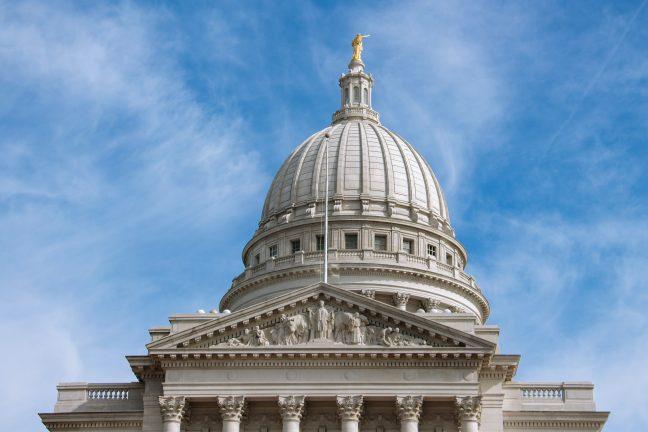A new GOP-authored proposal plans to progressively work toward setting a flat income tax rate for Wisconsin residents.
The bill, sponsored by Rep. John Macco (R-Ledgeview) and Rep. Jerry O’Connor (R-Fond du Lac,) features a five-year program that would lower each of the current four brackets’ income tax year-by-year until the lowest bracket — residents making less than $13,810 annually or married filers earning less than $18,400 per year — will pay no income tax, while all other Wisconsinites would be given a flat rate of 4.5%.
The highest tax bracket, which currently pays the largest share of state income tax, would receive a tax reduction for the first time in years through this plan, O’Connor said.
Currently, the state has a progressive income tax, which means as an individual’s taxable income increases, they pay a higher marginal tax rate, according to University of Wisconsin emeritus professor of public affairs and applied economics Andrew Reschovsky.
“Wisconsin is running a tremendous amount of surplus, and so what we have to do is take a look at why that is and where that money came from and what we’re doing with it,” Rep. Macco said.
This year, the state is projected to produce a budget surplus of around $7 billion.
According to Macco, Wisconsin’s sales tax revenue has been up 33% over the last two years due to a tax law change that required out-of-state vendors to remit sales tax into the state of Wisconsin. The proposal would offset those tax sale revenues by reducing income tax revenues.
“Every rate declines over time,” O’Connor said in an email statement to The Badger Herald. “This progression allows the state to make certain that we can support the next level of cuts included in the bill, which requires that State General Revenue Funds exceed expenditures. If we need to delay a cut, we have the flexibility to do that. This approach allows the state to retain flexibility in challenging economic times.”
The proposed tax reduction program would be evaluated after every year. If the state continues to turn out good revenue, then it would be repeated the next year. If Wisconsin’s revenue is low one year, the government can decide to stop the program, Macco said.
According to Reschovsky, making structural changes in taxing or spending due to a temporary budget surplus is not sustainable in public finance.
“If you’re cutting income tax revenue, you have to make it up somewhere else,” Reschovksy said. “Which means raising either local property taxes or the state-level sales taxes or business taxes. Sales taxes hit harder on those people who have low incomes — for example, students.”
One motivation behind the proposal is to make Wisconsin’s tax rates more competitive with nearby states. Higher-income individuals have the greatest capacity to leave the state and move to another one for a lower or 0% tax rate, resulting in a “mass exodus over the cost of taxes,” according to O’Connor.
According to Reschovksy, though the argument that lower tax rates will encourage population and income growth in the state is appealing, it may not be the reality.
“There is very little evidence that businesses or individuals make decisions based on state tax rate differences,” Reschovksy said.
Macco hopes the Republican-sponsored bill will receive support from Democratic Gov. Tony Evers, who has promised to veto any flat tax legislation passed by the state Legislature. Evers instead proposed a tax cut for the middle class of 10%.


